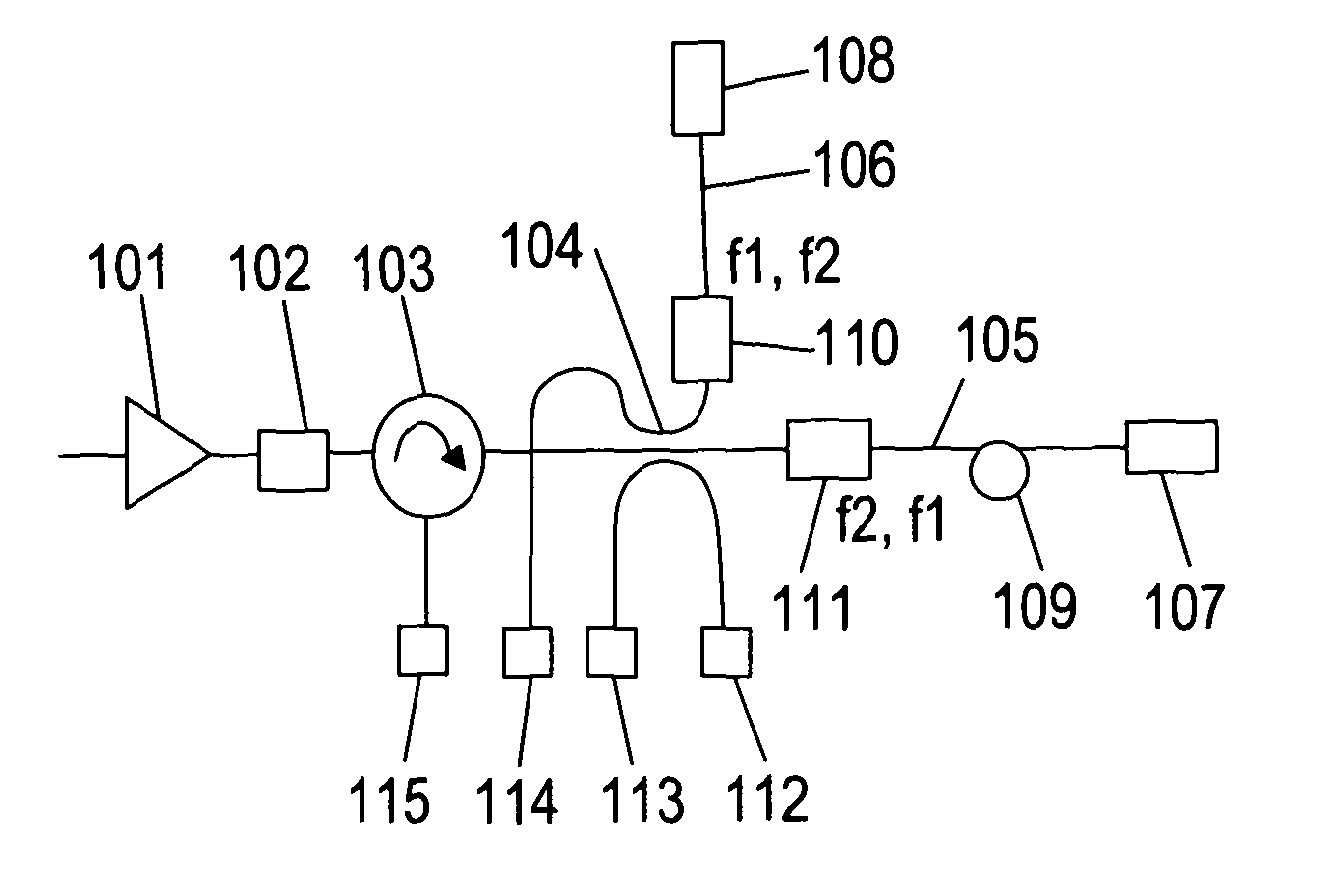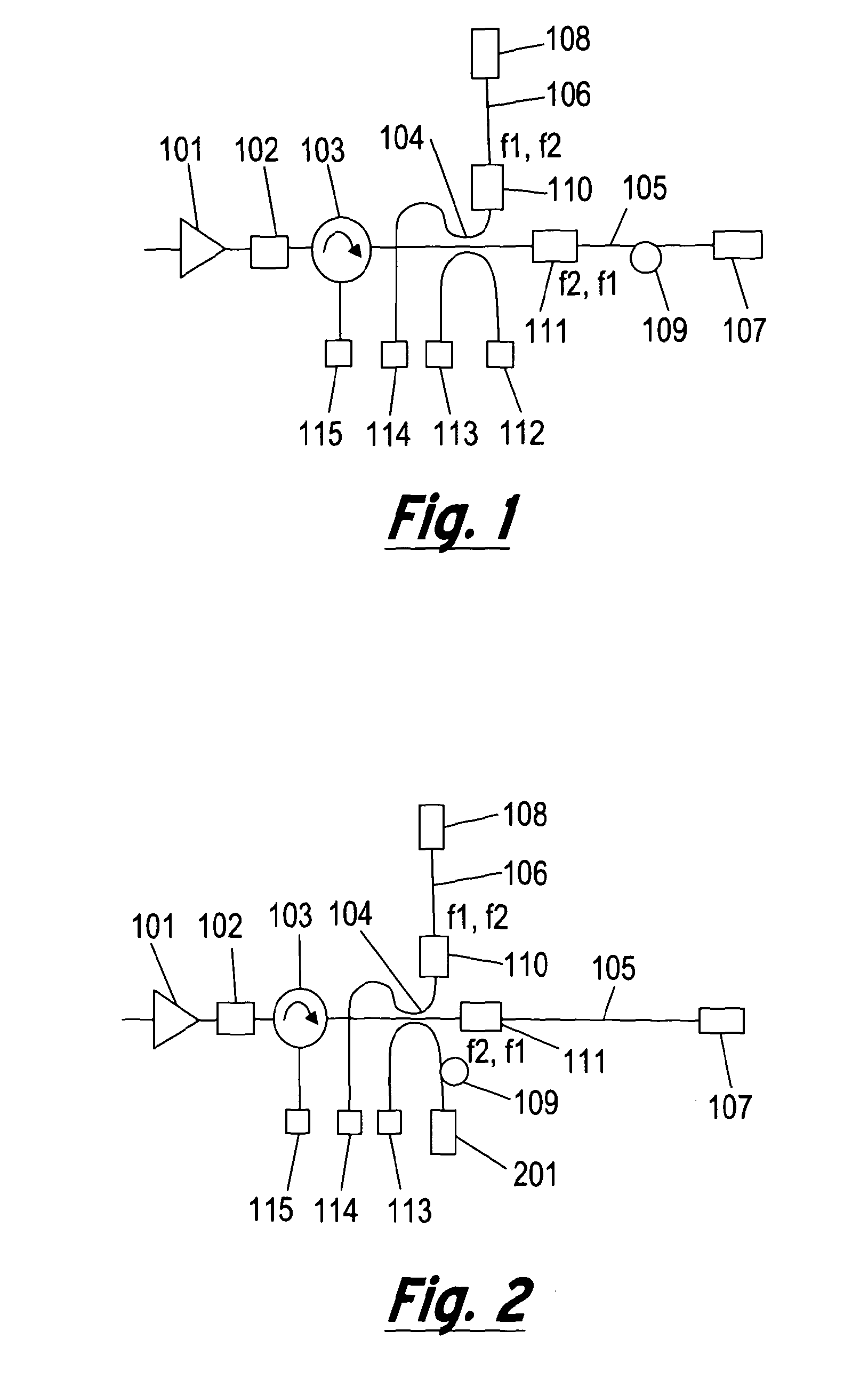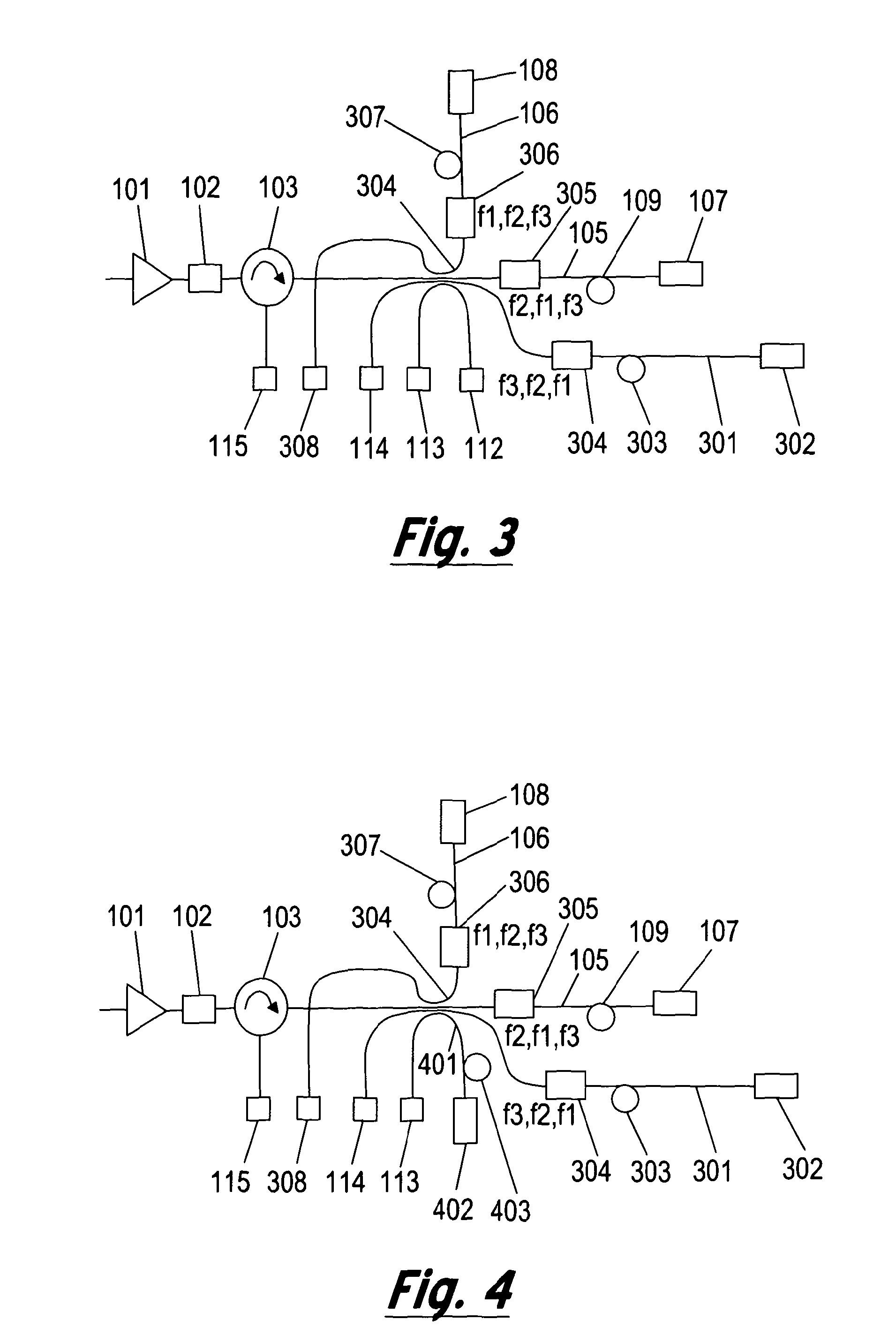Optical sensor and method of use
a technology of optical sensors and optical sensors, applied in the field of optical sensors, can solve the problems of limiting the measurement of strain, slow scanning rate, limited strain resolution, etc., and achieve the effect of fast quantitative measuremen
- Summary
- Abstract
- Description
- Claims
- Application Information
AI Technical Summary
Benefits of technology
Problems solved by technology
Method used
Image
Examples
first embodiment
[0047]FIG. 1 shows a first embodiment, generally depicted at 100, of a novel interferometer for measuring the optical amplitude, phase and frequency of an optical signal. The incoming light from a light source (not shown) is preferably amplified in an optical amplifier 101, and transmitted to the optical filter 102. The filter 102 filters the out of band Amplified Spontaneous Emission noise (ASE) of the amplifier 101. The light then enters into an optical circulator 103 which is connected to a 3×3 optical coupler 104. A portion of the light is directed to the photodetector 112 to monitor the light intensity of the input light. The other portions of light are directed along first and second optical paths 105 and 106, with a path length difference between the two paths. Faraday-rotator mirrors (FRMs) 107 and 108 reflect the light back through the first and second paths 105 and 106, respectively. The Faraday rotator mirrors provide self-polarisation compensation along optical paths 105...
embodiment 700
[0054]In this embodiment 700, light emitted by a laser 701 is modulated by a pulse signal 702. An optical amplifier 705 is used to boost the pulsed laser light, and this is followed by a band-pass filter 706 to filter out the ASE noise of the amplifier. The optical signal is then sent to an optical circulator 707. An additional optical filter 708 may be used at one port of the circulator 707. The light is sent to sensing fibre 712, which is for example a single mode fibre or a multimode fibre deployed in an environment in which acoustic perturbations are desired to be monitored. A length of the fibre may be isolated and used as a reference section 710, for example in a “quiet” location or with a controlled reference signal. The reference section 710 may be formed between reflectors or a combination of beam splitters and reflectors 709 and 711.
[0055]The reflected and the backscattered light generated along the sensing fibre 712 is directed through the circulator 707 and into the inte...
PUM
 Login to View More
Login to View More Abstract
Description
Claims
Application Information
 Login to View More
Login to View More - R&D
- Intellectual Property
- Life Sciences
- Materials
- Tech Scout
- Unparalleled Data Quality
- Higher Quality Content
- 60% Fewer Hallucinations
Browse by: Latest US Patents, China's latest patents, Technical Efficacy Thesaurus, Application Domain, Technology Topic, Popular Technical Reports.
© 2025 PatSnap. All rights reserved.Legal|Privacy policy|Modern Slavery Act Transparency Statement|Sitemap|About US| Contact US: help@patsnap.com



